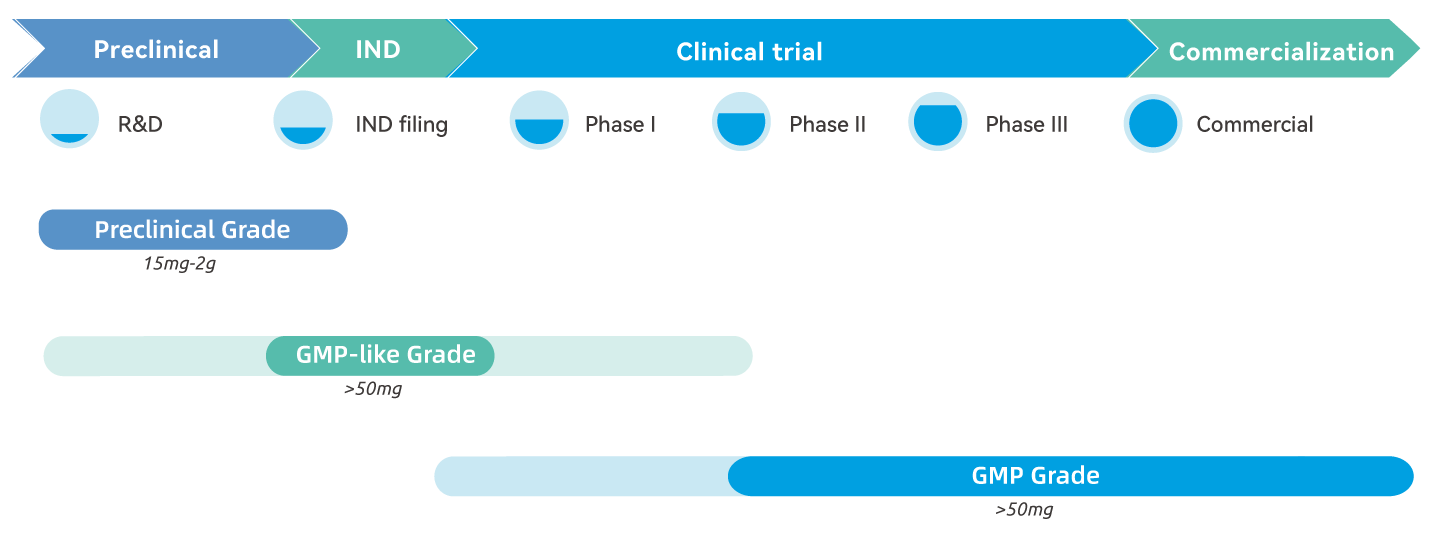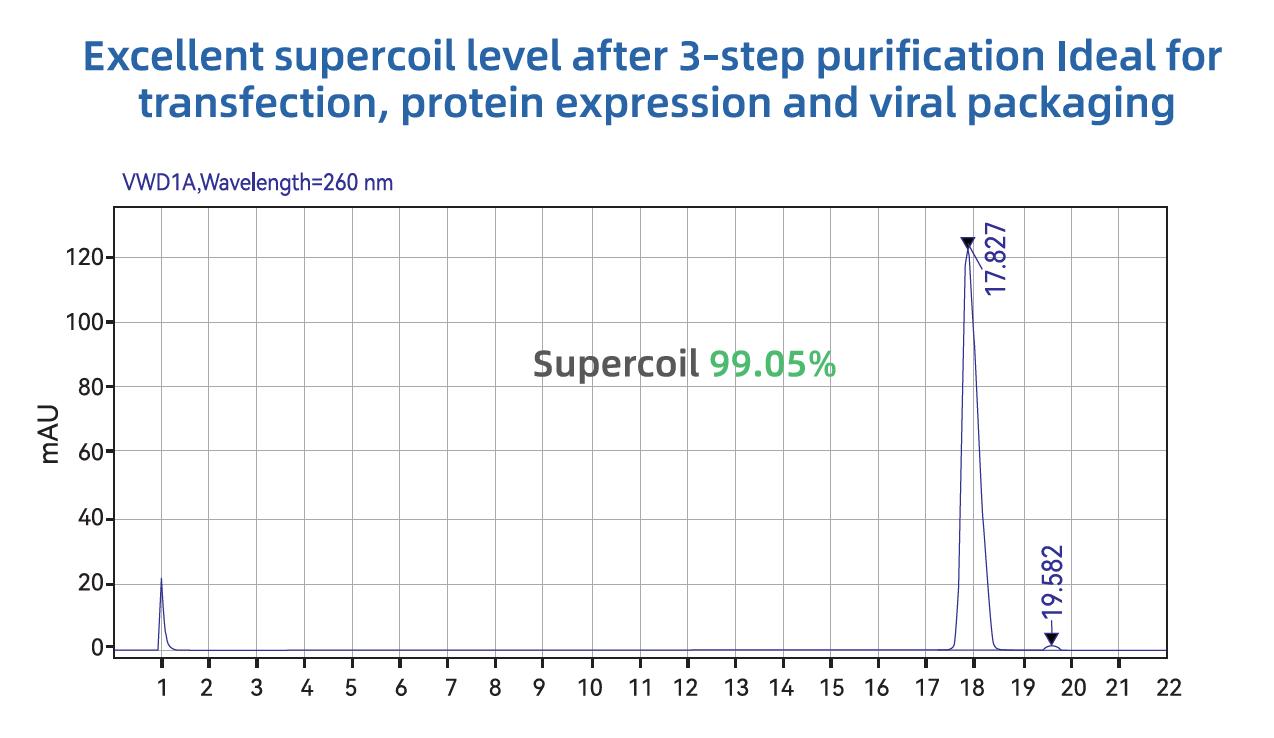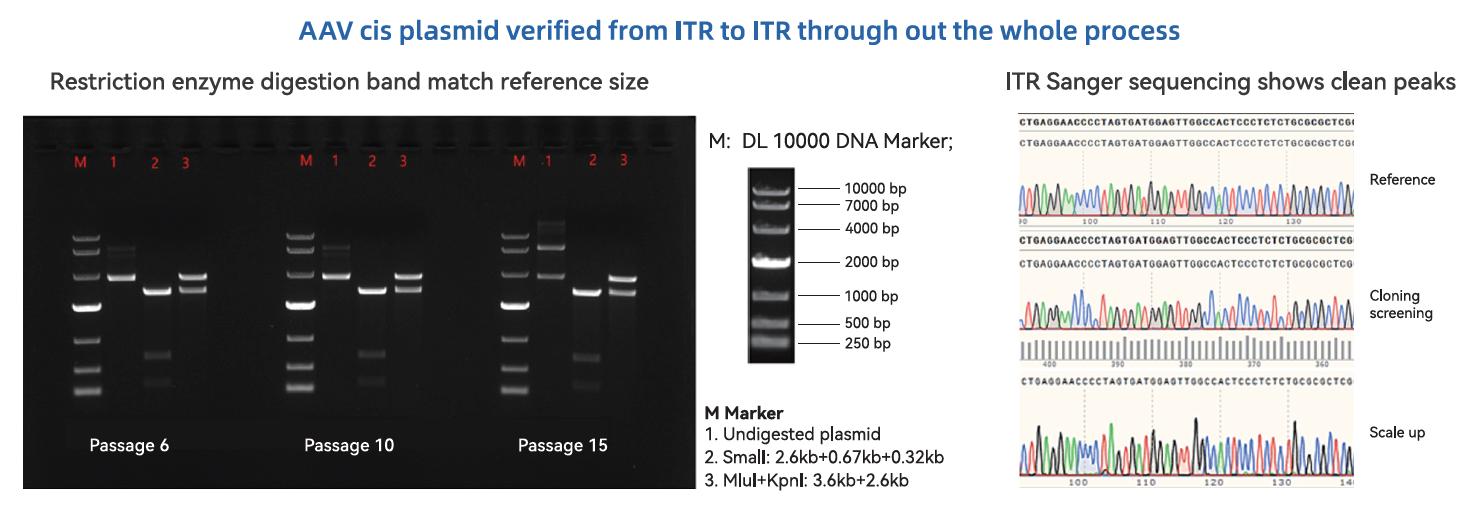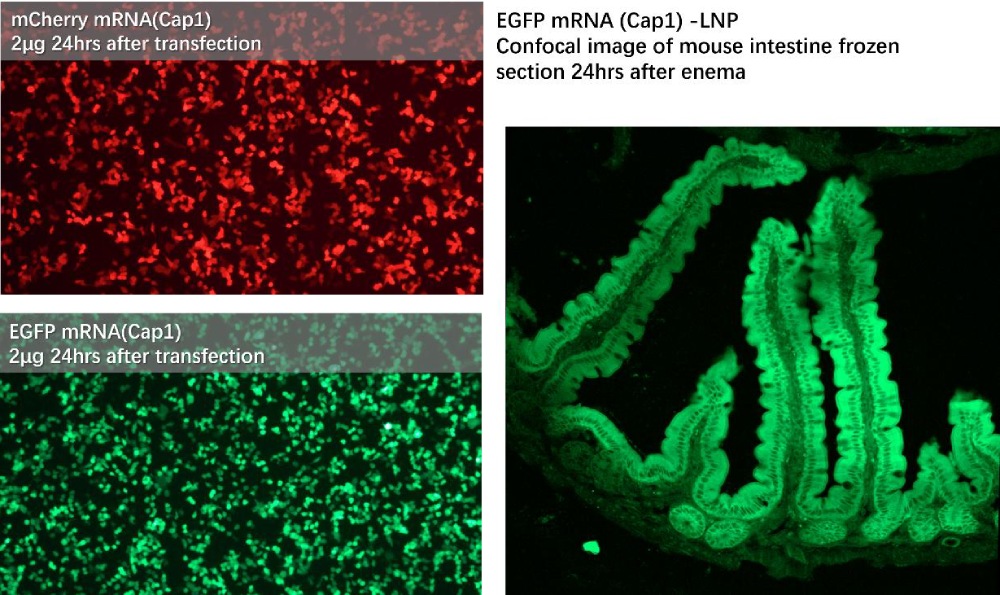High-quality plasmids are widely used across multiple therapeutic avenues including gene and cell therapies (GCT), mRNA/DNA Vaccines, and Nucleic acid drugs among others. PackGene provides plasmid manufacturing services that are ideal for any phase of the drug development cycle from basic discovery research to commercialization at any scale.
PackGene has processes in place for end-to-end design, production, and manufacturing of new or existing plasmids. We also offer full process development support for plasmid-specific projects, which includes USP, DSP, and analytical services.

High-quality plasmids are widely used across multiple therapeutic avenues including gene and cell therapies (GCT), mRNA/DNA Vaccines, and Nucleic acid drugs among others. PackGene provides plasmid manufacturing services that are ideal for any phase of the drug development cycle from basic discovery research to commercialization at any scale.
PackGene has processes in place for end-to-end design, production, and manufacturing of new or existing plasmids. We also offer full process development support for plasmid-specific projects, which includes USP, DSP, and analytical services.
| PackGene plasmid process | Preclinical | GMP-Like | GMP (Phase I & II) |
GMP (Phase III and commercialization) |
| Clone screening | √ | √ | √ | √ |
| Growth condition optimization | √ | √ | √ | √ |
| High density fermentation | √ | √ | √ | √ |
| Alkaline lysis | √ | √ | √ | √ |
| Chromatographic purification | √ | √ | √ | √ |
| Antibiotics free | √ | √ | √ | √ |
| Consistent manufacturing process | √ | √ | √ | √ |
| Instrument calibration/validation | Calibration | Calibration | Validation | Validation |
| COA & CoC | COA | COA | COA, CoC | COA, CoC |
| TSE/BSE | O | √ | √ | √ |
| Cell banking | PCB | PCB, MCB | PCB, MCB | |
| Manufacturing summary report | √ | √ | √ | |
| Good documentation practice | √ | √ | √ | |
| Master batch records | √ | √ | √ | |
| QA oversight | QA review only | √ | √ | |
| Validated change control system | √ | √ | ||
| Environmental monitoring | √ | √ | ||
| Process development | √ | √ | ||
| ISO classified production suites | √ | √ |
√ Included O optional
| Category | QC Test | Preclinical | GMP/GMP-like |
| Basic info | Volume | 3-50L | 5-200L |
| Quantity | 10~2g | 0.5~100g | |
| Turnaround Time | 2~3 weeks | ~3.5mon | |
| Standard QC | Appearance | √ | √ |
| A260:280 | √ | √ | |
| Homogeneity | √ | √ | |
| Restriction Analysis | √ | √ | |
| Residual RNA | √ | √ | |
| Residual E. coli DNA | √ | √ | |
| Endotoxin | √ | √ | |
| Bioburden Testing | √ | √ | |
| Sequencing | √ | √ | |
| Antibiotics Free Production | √ | √ | |
| Advanced requirements | Residual Host Protein | O | √ |
| Animal Free Production* | O | √ | |
| Mycoplasma Contamination | O | √ | |
| Material Archiving | O | √* | |
| pH | O | √ | |
| Kan | O | √ | |
| Sterility | O | √ | |
| Osmolality | O | √ | |
| Advanced Endotoxin Removal <0.005 EU/µg | O | O | |
| Dedicated purification resin | O | O | |
| Buffer | O | O | |
| Dispensing | O | O | |
| Dedicated filtration membrane | O | O |
√ Included O optional * GMP-like plasmid cell banking: PCB only, no stability test by default

Protein production
Plasmids are widely used in biotechnology as a primary substrate for protein production. In this instance plasmids serve as vectors for introducing the desired gene into host cells. This enables production of large quantities of recombinant proteins. These circular strands of DNA can be optimized to ensure efficient expression and high production yields for the target protein, making them invaluable tools in research and biopharmaceutical applications.
It is critical that plasmid solutions used for protein production contain only low levels of endotoxin contaminants. High endotoxin levels can trigger immune responses and inhibit proper protein folding, which ultimately compromises end-product quality. Additionally, maintaining a high plasmid supercoil level is essential for robust protein expression, as it enhances transcriptional efficiency and the stability of the gene, leading to increased yields of the desired protein. The combination of low endotoxin levels and high supercoil levels ensures safer and more efficient protein production processes that result in higher yields of biologically active and pure proteins.
At PackGene, we take pride in our antibiotic-free fermentation process and 3-step purification methods. Combining these rigorous protocols guarantees a plasmid with exceptionally high supercoiling and remarkably low endotoxin levels. Our commitment to stringent quality control and management ensures that downstream protein expression consistently reaches optimal levels, providing our customers with biologically active and pure proteins for their diverse applications.

AAV packaging
Experience the gold standard in AAV plasmid production at PackGene! We understand the complexities that come with the inclusion of Inverted Terminal Repeat (ITR) sequences that are required in AAV plasmid functionality. We have processes in place to ensure high-fidelity AAV plasmid production in the face of complications caused by ITR inclusion.
From the earliest plasmid production stage, we take meticulous steps to verify and monitor ITR sequence fidelity using Sanger sequencing and restriction enzyme digestion. Our special Sanger sequencing protocol guarantees a clear read-through of the ITR region, leaving no room for uncertainties. We also offer additional nanopore sequencing for quantitative ITR monitoring, further ensuring the utmost precision. Our rigorous processes, coupled with years of expertise in AAV packaging, make our AAV plasmids the most trusted choice for your gene therapy and research applications.
With PackGene, rest assured that you’ll receive top-quality plasmids that deliver exceptional results every time.
Learn more about PackGene’s AAV Packaging service

mRNA production
To produce high-quality mRNA, it is essential to begin with high-quality plasmid and linearization. Here at PackGene we ensure the highest quality linearized plasmid through several processes, including:
- Rigorous purification: We use a 3-step purification to remove impurities and endotoxins that are detrimental to in vitro mRNA production.
- Meticulous sequencing: We offer a 100% Gene of Interest (GOI) sequence guarantee as well as careful handling of poly A sequences.
- High-Yield Linearization: Our linearization process shows a nearly 100% linearization rate, which is the most important factor for efficient in vitro transcription of mRNA.
- Functional Verification: We verify plasmid quality by in-house mRNA production.


Preclinical Plasmid
PackGene provides preclinical grade plasmids with rigorous quality specifications, perfect for in vivo animal studies from mice to non-human primates in gene therapy, cell therapy, and vaccine research. Available in quantities starting from 10 mg.
READ MORE
GMP Plasmid DNA
PackGene provides GMP-grade plasmid services, covering cloning, amplification, and purification. Our versatile GMP plasmids support AAV and mRNA production, along with other applications.
READ MORE
Plasmid Production Platform
PackGene excels in GMP bacterial banks, offering flexible options tailored to your needs. Our expert team collaborates with you to design a customized project proposal, ensuring high-quality plasmid release based on specific requirements.
READ MORE
Are pH measurements required, and is a large amount of sample wasted to carry out pH measurements?
Measurement of pH is a mandatory for the release of rAAV Fast Service deliverables. A micro pH electrode may be used to save sample and thus the required sample volume to perform pH measurements is only ~15uL-100uL.
What is loading?
In accordance with the Pharmacopoeia General Rules 0942, we use the minimum filling quantity inspection method for detecting sample loading quantity.
How to interpret A260/A280 value?
A260/A280 is the ratio of sample absorbance measured at wavelengths of 260nm and 280nm. This measure is commonly thought to represent the ratio of DNA to protein in a sample. For rAAV, A260/A280 can used as a measure of the full to empty shell rate and to identify protein contamination. Low A260/A280 levels may suggest that the empty shell rate is high. Alternatively, high A260/A280 may suggest that the sample has been contaminated with proteins that are not incorporated into the AAV capsid shell. The greatest advantages of this measure are its convenience and speed.
What tests are performed to differentiate rAAV capsid proteins from specific protein impurities?
SDS-PAGE is used to identify rAAV capsid proteins. In addition, SDS-PAGE can be used to directly identify specific protein impurities including the presence of host proteins, BSA, or degraded AAV capsid proteins.
CDMO Plasmid Flyer

